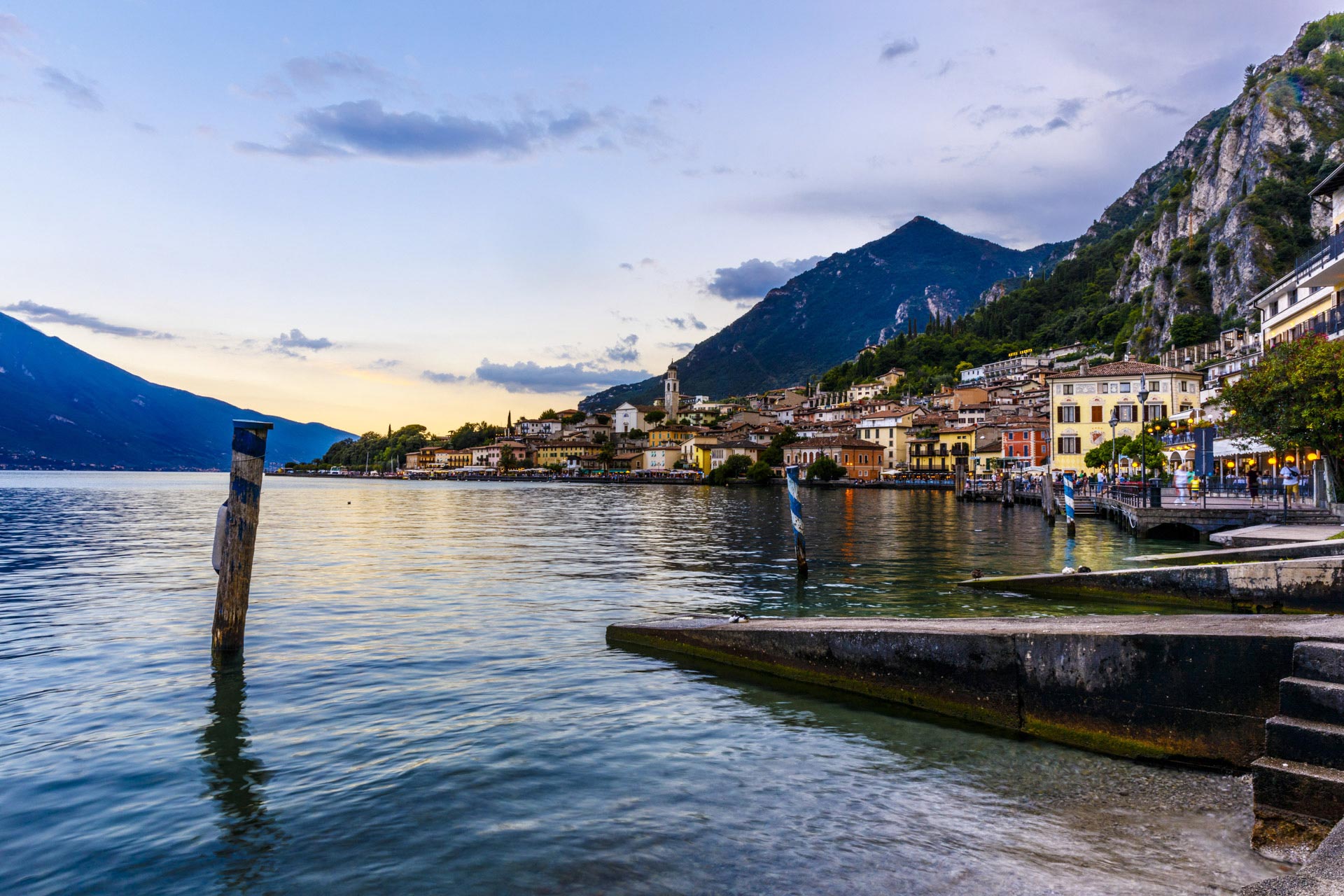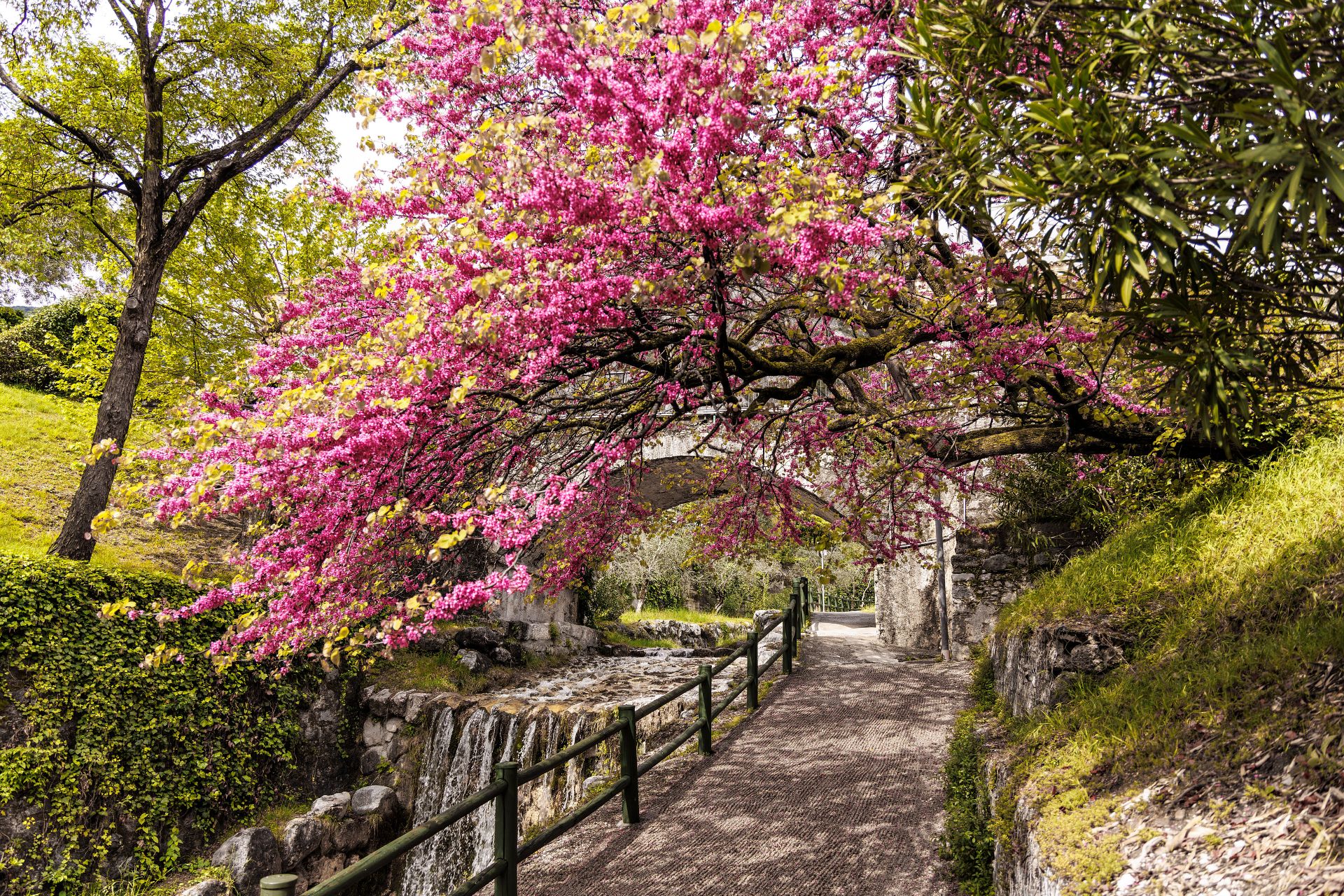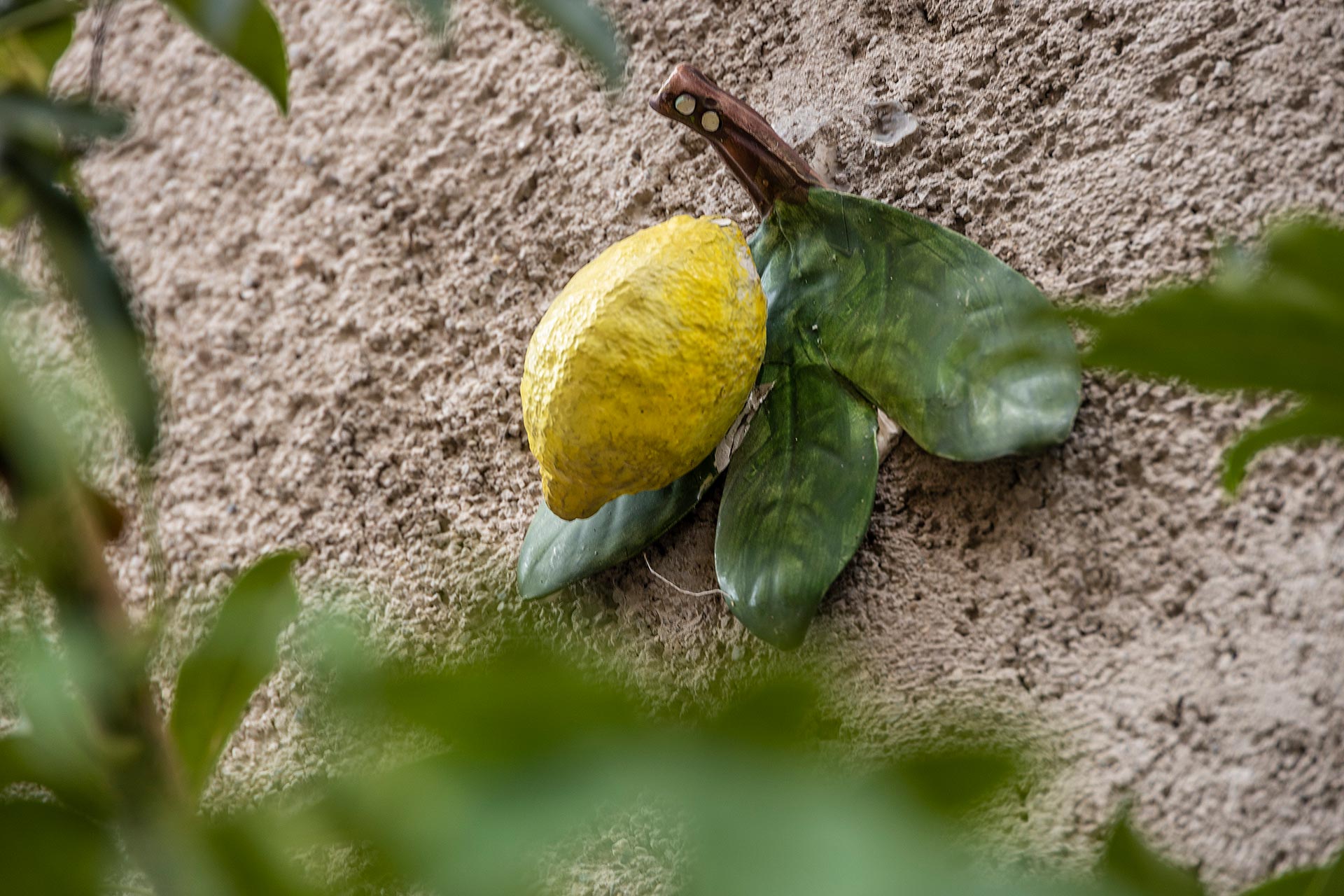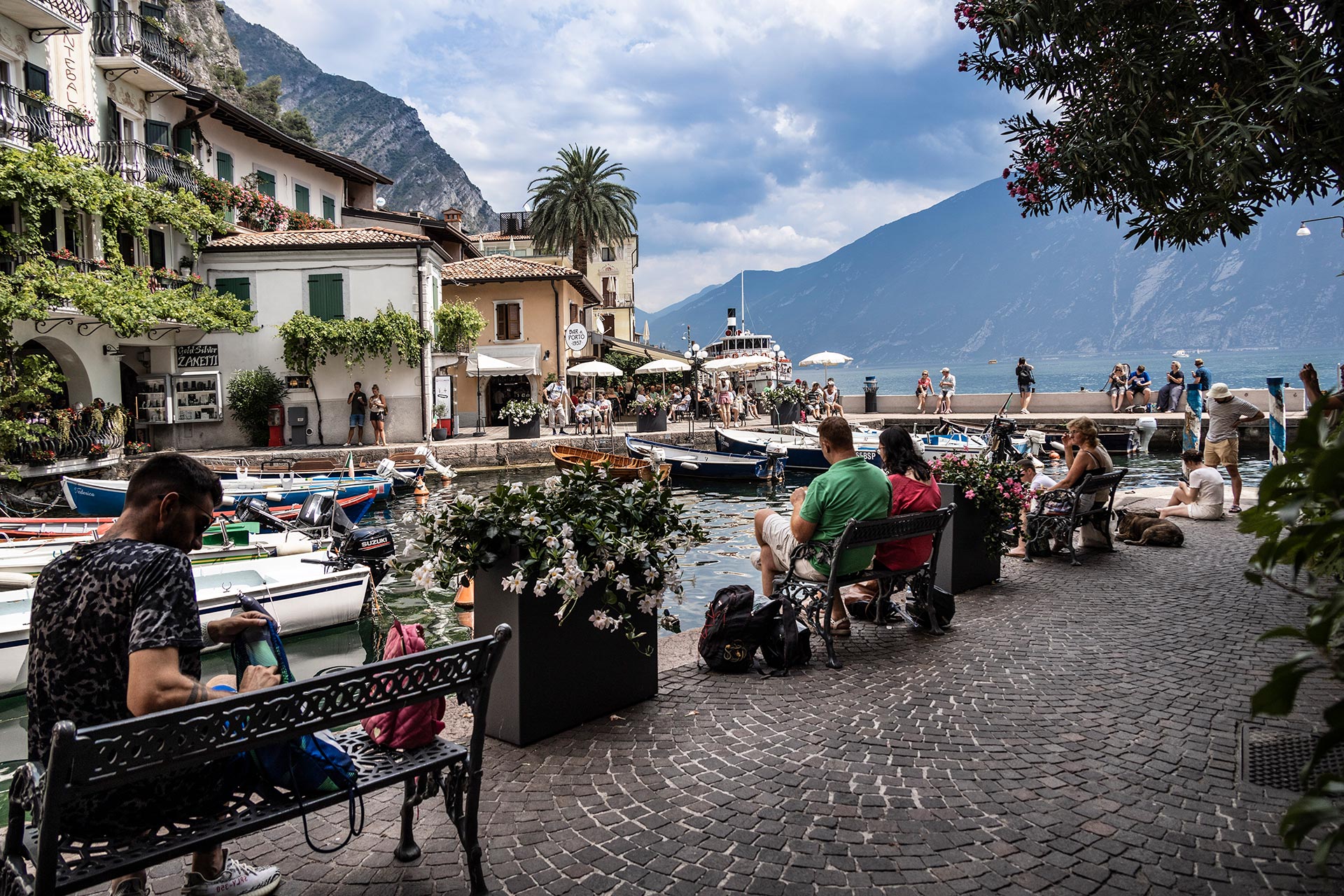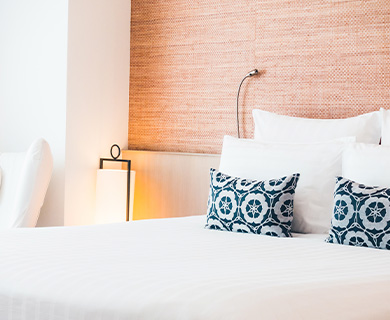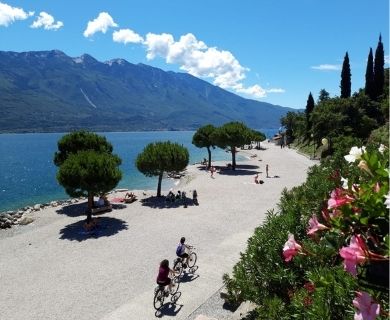5 Smart Tours, visiting Limone has never been so easy!
News 2022!
The Tourist Board has created a series of "Smart" themed itineraries that allow you to discover the wonders of the resort in total autonomy, with the help of your Smartphone.
Thanks to the presence of a series of QR codes, scattered throughout the area to mark the most significant attractions, tourists can let themselves be transported through the characteristic streets of the village and immerse themselves in its history. Once scanned with a mobile phone, these QR codes will act as an audio guide, answering any questions the visitor may have and allowing them to experience the village in a more interactive and functional way.
There are five routes, divided by theme and all designed to arouse different emotions in those who follow them.
5 Smart Tour, experience Limone by yourself!
1. "Ancient trades”
Duration about 2H 30' Level of difficulty: medium
The first tour leads us to the rediscovery of traditions through a visit to the Fishermen's Museum and the Oil Mill. It starts in the municipal gardens of Villa Boghi. Since 2004 Villa Boghi has been home to the Town Hall. In the large park, which is open to the public every day, you can admire the lush, typically Mediterranean vegetation: the characteristic Limonaia, citrus fruits, olive trees, palms and numerous exotic plants. In the northern part of the garden is the bust of Saint Daniele Comboni. Born in Limone in 1831, Comboni, a Catholic missionary and bishop, founded the institutes of the Comboni Missionaries of the Heart of Jesus and the Pious Mothers of ‘Nigrizia’. Near the bust is the Fishermen's Museum, created to keep the history of the "old trades" and traditions of the local inhabitants alive in the memory. The corridor leads to the Limonaia, a building dating from the early 20th century. The current plants were planted in 2004. From 1700 onwards, Limone became famous to produce citrus fruits: one of the activities that determined the economic development of the town. Leaving the gardens in the direction of Via Tamas, you can admire the capital with the statue of St John of Nepomuk. From the path behind it, a 15-minute walk, slightly uphill and with steps, takes you to the oil mill. Olive growing in the area developed in the Middle Ages. Thanks to the microclimate of the lake, Garda is one of the northernmost areas where olives are cultivated. An exhibition of extra virgin olive oil has been set up inside the Oleificio, with the projection of a video on the milling process and the possibility to taste and buy the oil, which is recognized as a POD. (Protected Designation of Origin) product. The exhibition is open Monday to Friday from 4th April to 14th October from 10:00 to 12:00 and from 16:00 to 18:00. For the return journey, it is advisable to follow the same route.
2. The "Panoramic" route
Duration 5 hours, Level of difficulty: easy
We recommend the "Panoramic" itinerary for those who love history and breathtaking views of the lake, an exciting route that ends with the famous cycle path overhanging Lake Garda.
This route starts from the information office in Piazzale Alcide de Gasperi. Continue towards Lungolago Marconi following the signs for the Cycle path until you reach the Local Police office. At the back of the building is the entrance to the Museum of Tourism, which can be visited free of charge. Located in the former town hall, it contains a collection of documents, images and historical photos relating to the birth and development of tourism in the town up to the present day.
At the end of the visit, continue towards the Porto Vecchio to the Imbarcadero. Along Via Nova, with a bit of a climb and a few steps, you will reach the Church of San Rocco. It was built in the first half of the 16th century as a thanksgiving for the people of Limone who had escaped the contagious plague that struck northern Italy in those years. Well integrated into the landscape between the rock, the lake, and the Limonaie, it is one of the most popular places in the town and is one of the most picturesque and photographed views. After visiting the church, it is advisable to continue along Via Nova towards the cycle-pedestrian path. About 1 km further on, in Sopino, there is also a free beach for our four-legged friends. Inaugurated on 14th July 2018, the famous cycle path suspended overhanging the Garda winds for 2 km until it reaches the border with Trentino. The route ends with the arrival at the monument erected to commemorate the fallen during the construction of the Gardesana road in the 1930s. The return journey is along the same route.
3. "Art and Tradition"
Duration 2H and 30' - level of difficulty: easy
Thanks to the numerous churches and the famous Limonaia, this route documents a past of spirituality and dedication.
The route begins at the information office on the main road at Via IV Novembre 29/I, near the Caldogno car park. Cross the road to reach the entrance of the Church of San Benedetto. The parish church was built in 1691 by Andrea Pernis, enlarging an earlier Romanesque church, which seems to date back to before the 11th century. The interior houses artistic masterpieces from the early 16th century to the present day. Leaving the side opposite the entrance and descending a flight of steps along Via Daniele Comboni, one reaches the former Church of St. Charles. Its construction is estimated to have taken place around 1905; around the 1930s the altar and sacred furnishings were removed and since the 1960s cultural and charitable activities have been held there. Continuing along Via Corda and up Via Rovina, we reach the Limonaia del Castel. It dates to 1700, a period when citrus fruit cultivation was already widespread in our territory. The Limonaia became a museum in 2004. It is set out on several terraces closed on three sides by a massive wall that protects about a hundred citrus plants. The Limonaia is still today, an incomparable historical and architectural heritage of Garda and documents a past of work and dedication. The visit to the museum lasts about an hour, at the end of which it is advisable to go down to Piazza Garibaldi to admire its beauty.
4. Family
Duration 1h 30', Level of difficulty: easy
Dedicated to families, the "Family" route is suitable for children and can also be covered in a pushchair. It begins with a walk along the lake to the gardens of Villa Boghi and ends at the playground in Via Capitelli to the delight of your children.
It starts from the information office on the lakeside in Piazzale Alcide De Gasperi, near the multi-storey car park. Walk along the promenade along Cola beach towards the mouth of the San Giovanni stream for about 300 meters. Go up the stream and, after a short climb, reach the statue of San Giovanni Nepomuceno. The historic bridge dating back to 1600, on which the Capitello was built, underwent several renovations over the course of time due to numerous floods and was for a long time the main link between the center of the village and the countryside towards Tremosine. A few steps away is the entrance to the gardens of Villa Boghi, which has been the seat of the municipal administration since 2004. As well as admiring the beautiful garden and being able to relax on benches in the shade, you can visit the Fishermen's Museum free of charge. In the Museum you will find a typical boat and all the special tools that fishermen used daily. There is also a small lemon house next door so that visitors can discover in one place the ancient rural customs and appreciate the development and economic transformation of this former fishing village. At the end of the visit, leave the gardens, cross the road, and walk along Via Capitelli, where there is a lovely playground for children to enjoy.
5. Body and soul
Duration 4H and 30', Level of difficulty: medium
If you are looking for a moment of well-being and spirituality, "Body and Soul" is the route for you. After climbing up the San Giovanni stream and the path in the locality of Prealzo, you reach the birthplace of Saint Daniele Comboni. This is perhaps the most demanding tour but certainly the most involving.
The tour starts from the Information Office in Piazzale Alcide De Gasperi and follows the path along the San Giovanni stream, slightly uphill and with a few steps. After walking upstream for about half an hour, you arrive in Milanesa, which also has a fitness area for the sportier. This area, dedicated to physical well-being, is surrounded by nature, and offers the possibility of enjoying moments of total relaxation. On the left, there are stairs marking the start of a path. The path leads straight to the Comboni Mission Centre via Prealzo. Saint Daniele Comboni, born in Limone in 1831, was a missionary, Catholic bishop and founder of the Comboni Missionary Institutes of the Heart of Jesus and the Pious Mothers of Negritude. Today, the center is home to the missionaries named after him, who collaborate in welcoming pilgrims and tourists who want to learn more about the Saint's life. In addition to the Birthplace, it is possible to visit free of charge the Multimedia Museum dedicated to the Saint, the Lemon House complex, and the Museum of Curiosities. At the end of the visit, go down Via Tovo until you find the small Church of San Pietro on the right. Immersed in the olive grove, it is the oldest church in Limone: recent archaeological excavations date it back to the 9th century. Nearby there is a dog park for the enjoyment of our four-legged friends. For the return journey, continue down Via Tovo until you return to the main road, where you can simply follow the signs to reach the historic center.
